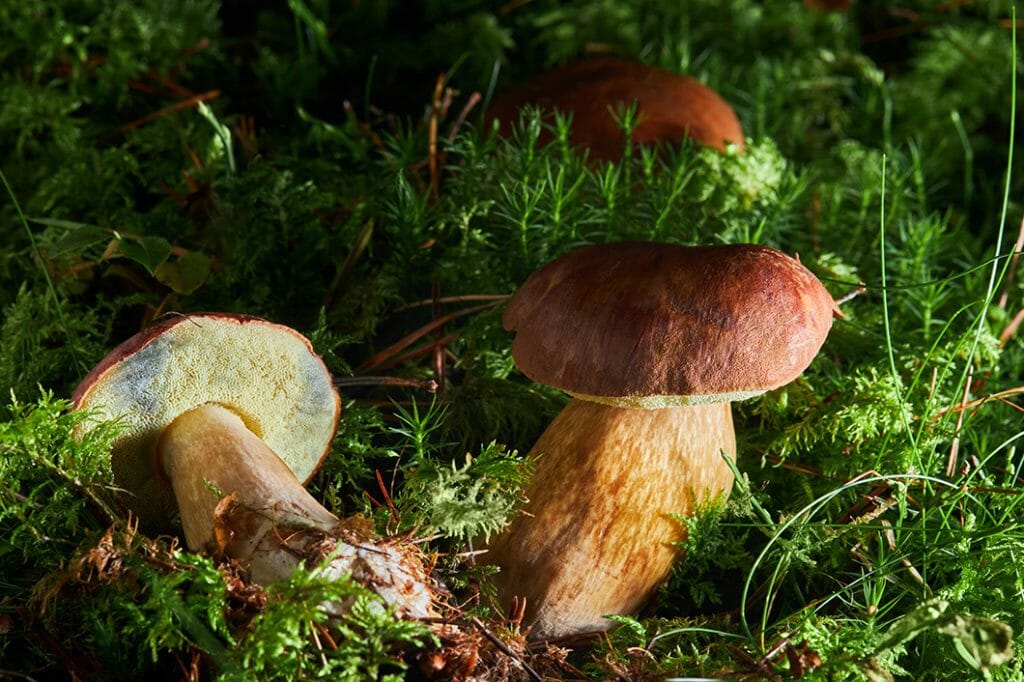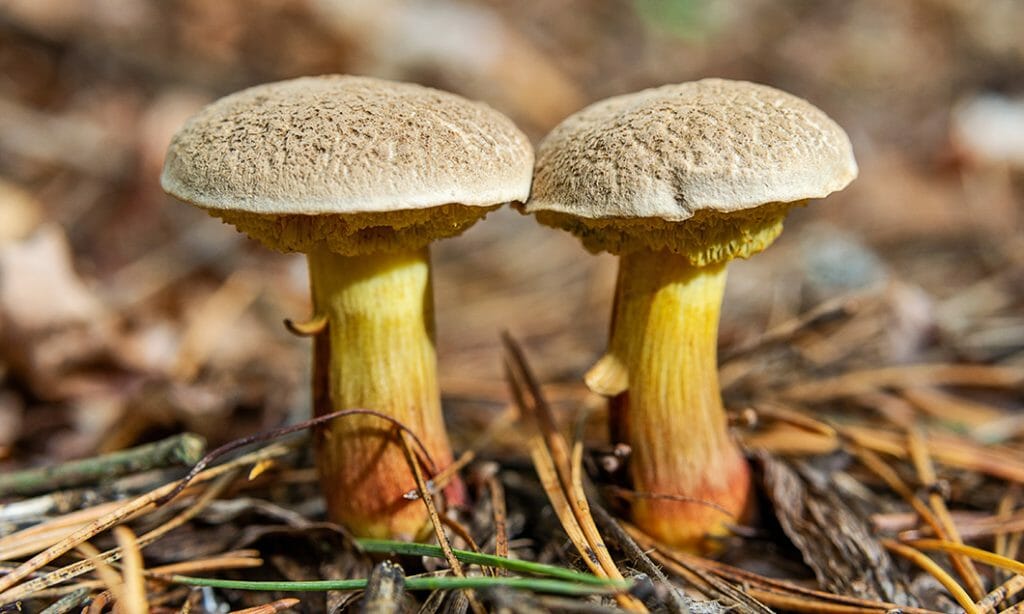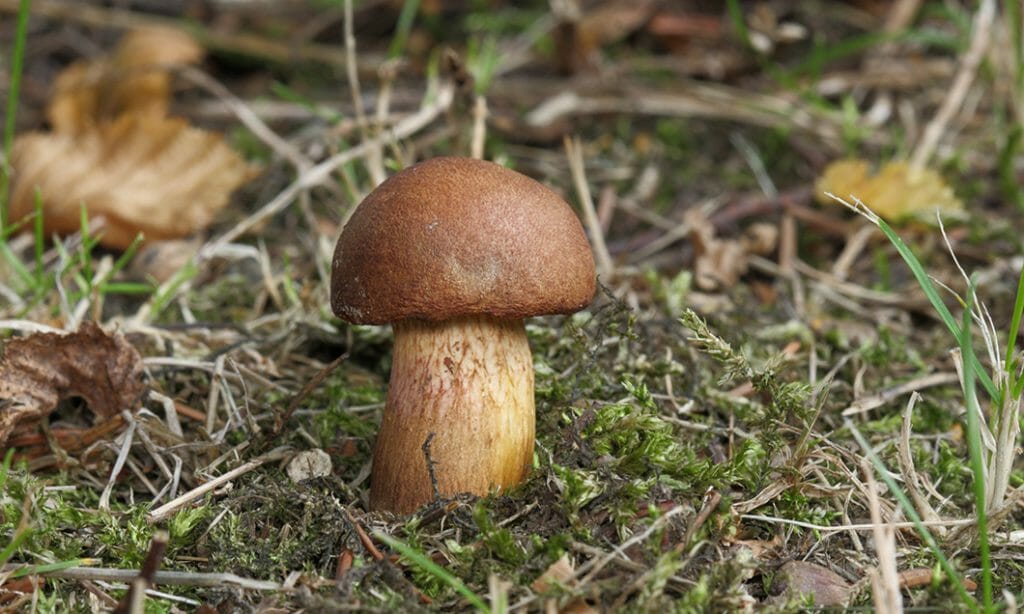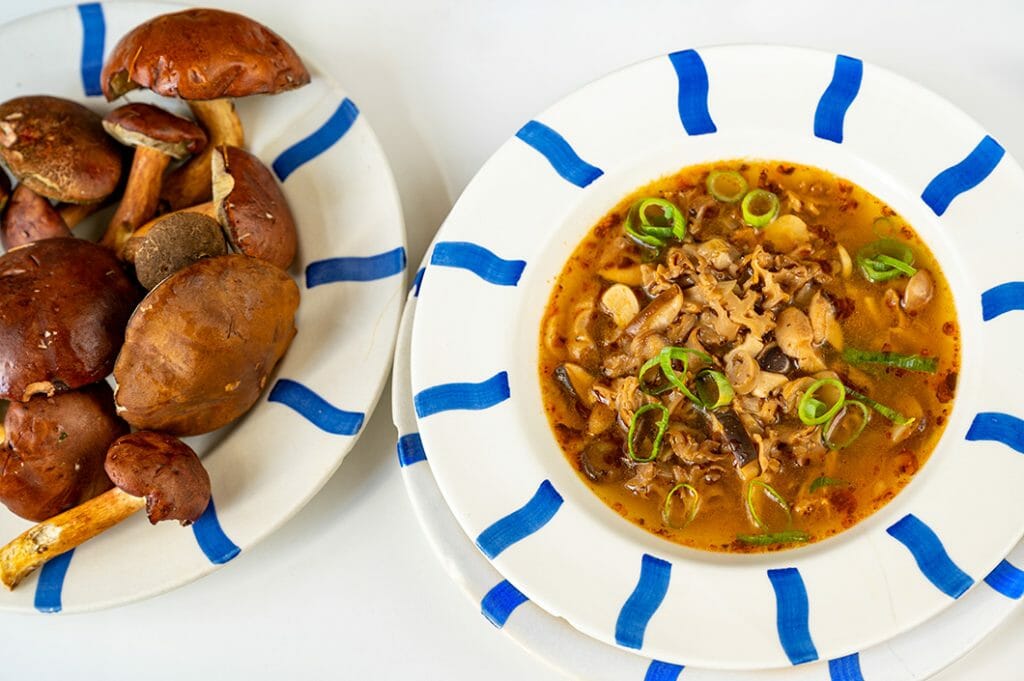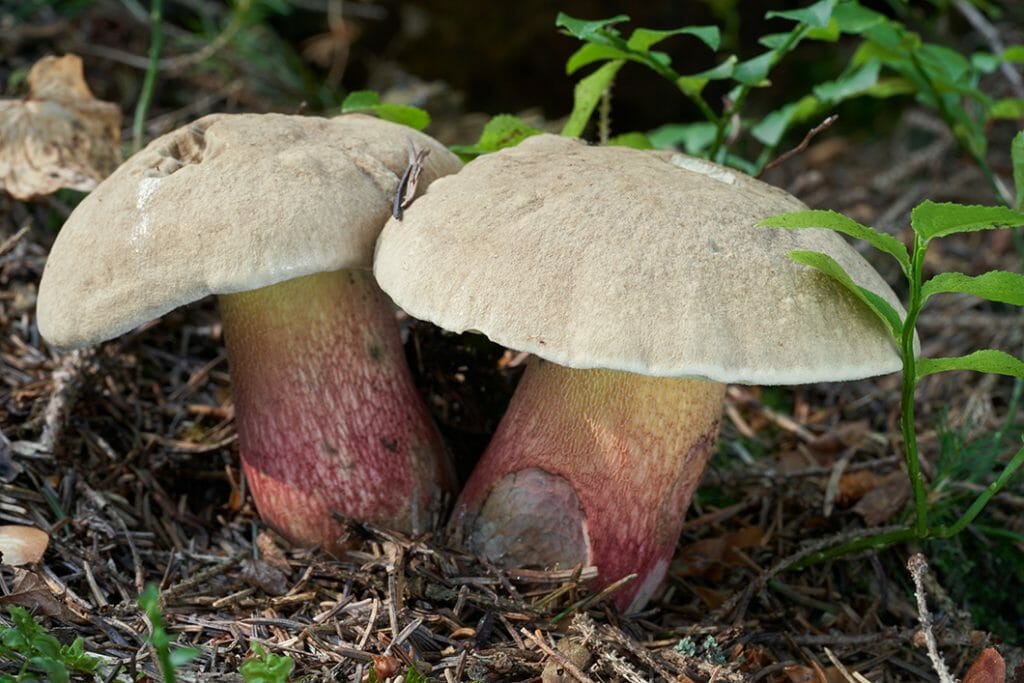This post is also available in:
Slovenščina (Slovenian)
Hrvatski (Croatian)
Deutsch (German)
Italiano (Italian)
The bay bolete is a highly valued mushroom in Slovenia and many European cuisines, especially its younger specimens. It is often compared to its distant relative, the porcini, but its taste is much less pronounced.
Name: Bay Bolete, lat. (Imleria badia)
Description: The cap ranges from chestnut to reddish-brown to dark chocolate brown. It has the classic cushion shape of porcini mushrooms, initially hemispherical, then convex with a tucked rim, flattened reaching a diameter of up to 15 cm. The skin is initially velvety and dry, but becomes increasingly smooth with age, shines and the color fades slightly. The stalk is bulbous in young mushrooms, later it lengthens and thins and is 3-5 cm thick. It is yellowish-brown in color, sprinkled with fine, dense brown grains, which give it a longitudinally fibrous appearance. As it ages, it becomes quite hard and fibrous, so it is removed before cooking and only the part under the cap, which is lighter in color, is retained. The hymenium is porous, initially yellowish in color, turning greenish-yellow to olive-green with age. It changes color to blue-green when pressed. The tubes are shorter at the stem and easily separated from the cap flesh. The flesh is whitish, sometimes light yellowish, reddish-brown under the cap skin. It is firm at first, but begins to soften as the mushroom ages. The flesh turns blue when cut. It has a pleasant, slightly fruity smell and a delicate taste. The spore print is olive brown in color.
Harvesting: The bay bolete is a mycorrhizal mushroom that often grows in symbiosis with spruce, although it can also be found under pine trees. It is a common mushroom in coniferous (less often mixed) forests, found from late summer to November. It grows singly or in small groups. They appear en masse mainly three to four days after rainfall. They are often well hidden under the needles and many people mistake them for porcini from a distance. It is widespread throughout Europe and North America, as well as elsewhere in the world. However, because the bay bolete accumulates certain trace metals from the soil (mercury, nickel, cobalt), it should be harvested in unpolluted areas.
It is somewhat similar to the suede bolete (Xerocomus subtomentosus), which has a cap that is yellowish to olive-brown or greenish in color, a slender yellowish stalk, and a yellow hymenium. The hymenium turns green to the touch, it is a common mushroom, edible and valued especially while it is young.
The bay bolete is also similar to the tawny grisette bolete (Aeroboletus Morvicus), which also has a brown cap and a yellow hymenium, but does not turn blue when touched, and the flesh also remains white when cut. It grows in deciduous forests, especially under oak trees, is edible, good, but a rarer mushroom.
Use: The bay bolete is considered a good and edible mushroom, some even compare it to porcini, although the taste is much milder. Bay boletes are excellent for drying and dried they can be ground into a powder, which is used as a spice. It can be used in the same way as porcini, it is excellent fried in butter or olive oil, in soups, sauces, meat and fish dishes. The mushrooms can also be frozen or pickled.
What it contains: The bay bolete, like all mushrooms, is composed mostly of water, carbohydrates, proteins and unsaturated fatty acids. It contains some vitamins and is rich in minerals (phosphorus, potassium, magnesium, iron and zinc). It also contains the compound theanine, which is found in green tea and has strong antioxidant properties.
Warning: Inexperienced mushroom pickers could confuse the bay bolete with some other, inedible species, which also changes color to green-blue when pressed on the hymenium, and the flesh also turns blue-green when cut. One such is the bitter bolete (Caloboletus calopus), which has a much more red-colored stalk, the flesh is bitter, even when heat-treated, and causes gastrointestinal poisoning.
Interesting facts:
- It was first described in 1821 by Elias Magnus Fries and named it Boletus badius. Later, this species was called Xerocomus badius, only in 2014 did the Italian mycologist Alfredo Vizzini gave it today’s Latin name Imleria badia.
- The generic name Imleria is in honor of the Belgian mycologist Luis Imler, the older genus name Boletus is of Greek origin and means a clay lump, and badia means reddish brown.
- The bay bolete, unlike some species, was not named because it grows in symbiosis with chestnut trees (it most often grows in symbiosis with spruce trees), but because of the color of the caps, which are similar to chestnut color.
- It can also be found on rotten stumps, so some sources state that the bay bolete is not exclusively a mycorrhizal mushroom, but also feeds as a saprophyte.
- The bay bolete also has potential as a bioremediation agent for cleaning up contaminated sites.
- Inexperienced pickers are bothered by the fact that the hymenium and flesh turn blue, and according to old beliefs, everything that turns blue or green is poisonous.
- The bay bolete contains brown pigments in the cap skin that absorb radioactive cesium. Samples collected in Europe after the Chernobyl disaster in 1986 contained several times more radioactive cesium.
- As with all types of mushrooms, it also applies to the bay bolete that you should only pick it if you know the mushroom well.
